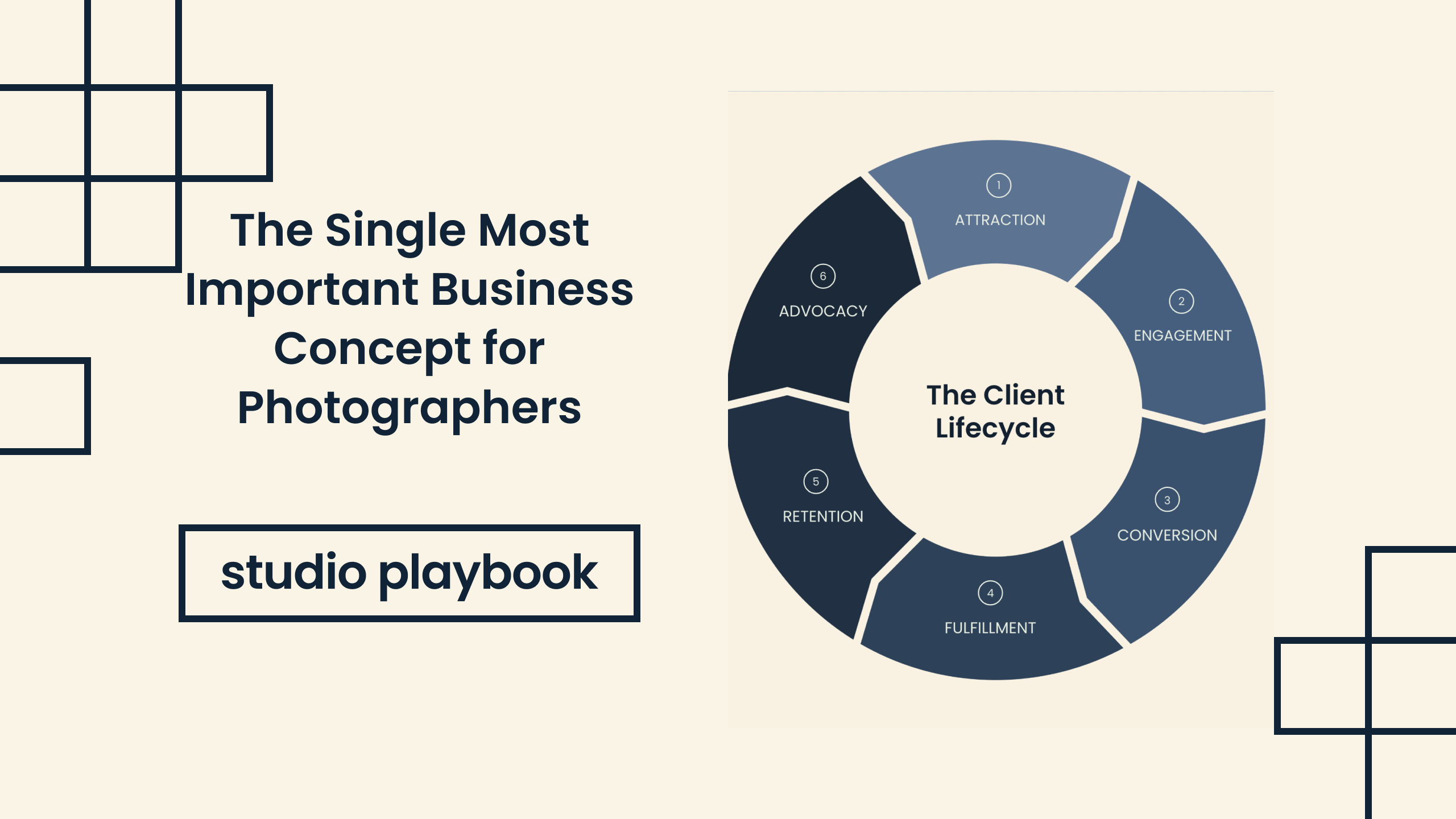Future-Proofing Your Photography Business: The Role of CRM in Adapting to Market Changes

In today's rapidly evolving business landscape, it is crucial for photography businesses to stay ahead of the curve and adapt to market changes. Future-proofing your photography business is not just about surviving in the competitive industry, but also thriving and consistently delivering value to your customers. One effective tool that can help you navigate these changes is Customer Relationship Management (CRM).
Understanding the Concept of Future-Proofing in Photography
Future-proofing is the proactive approach of anticipating and preparing for future challenges and opportunities in your photography business. It involves developing strategies and adopting technologies that enable you to stay relevant and competitive in the dynamic marketplace.
One key aspect of future-proofing in photography is staying abreast of the latest technological advancements. With the rapid pace of innovation in camera equipment, editing software, and online platforms, photographers must continuously upgrade their skills and tools to meet the evolving demands of clients. By investing in cutting-edge technology and mastering new techniques, photographers can enhance their creativity and efficiency, setting themselves apart in a crowded industry.
The Importance of Adapting to Market Changes
Market changes can happen due to various factors, such as technological advancements, shifts in consumer preferences, and new emerging trends. By embracing these changes, you can position your photography business to capitalize on emerging opportunities and stay ahead of competitors.
Furthermore, adapting to market changes involves understanding the needs and desires of your target audience. Conducting market research, seeking feedback from clients, and monitoring industry trends are essential steps in identifying new opportunities for growth and innovation. By listening to the voice of the customer and aligning your services with their expectations, you can build long-lasting relationships and foster customer loyalty.
The Role of Innovation in Future-Proofing
Innovation plays a pivotal role in future-proofing your photography business. It involves continuously exploring new ideas, products, and services that meet the changing needs of your target market. By embracing innovation, you can differentiate yourself from competitors and attract new customers.
Moreover, innovation goes beyond just product development; it also encompasses creative marketing strategies and business models. By thinking outside the box and experimenting with unconventional approaches, photographers can create unique value propositions that resonate with their audience. Whether it's offering personalized photo shoots, hosting workshops on photography techniques, or partnering with other creative professionals, innovative thinking can open up new revenue streams and expand the reach of your photography business.
The Role of CRM in Photography Business
Customer Relationship Management (CRM) is a strategic approach to managing interactions and relationships with your clients. It involves using technology and data to optimize your business processes, enhance customer experience, and drive growth.
When it comes to the photography business, CRM plays a vital role in not only organizing client information but also in fostering long-lasting relationships. By utilizing CRM software, photographers can efficiently track client details, preferences, and past interactions, allowing for a more personalized approach to their services. This personalized touch can significantly enhance customer satisfaction and loyalty, ultimately leading to repeat business and referrals.
What is CRM and Why is it Important?
CRM is a software tool that centralizes and organizes customer-related information, such as contact details, purchase history, preferences, and interactions. It provides a comprehensive view of your clients, enabling you to deliver personalized experiences, improve customer satisfaction, and build long-term relationships. Implementing CRM is crucial for the success of your photography business, as it helps you effectively manage customer interactions at every touchpoint.
Moreover, CRM systems are designed to not only store data but also to analyze it. By leveraging the analytical capabilities of CRM, photographers can gain valuable insights into their client base. This data-driven approach allows photographers to anticipate client needs, tailor their services accordingly, and stay ahead of market trends.
Benefits of Using CRM in Photography Business
Using CRM in your photography business offers several benefits. First, it helps you streamline your workflows, automate repetitive tasks, and improve operational efficiency. This allows you to focus more on creative aspects and providing quality services to your clients. Additionally, CRM enables you to gain valuable insights into customer behavior, preferences, and purchasing patterns. By analyzing this data, you can make informed business decisions, develop targeted marketing campaigns, and better understand your clients' needs.
Furthermore, CRM can serve as a powerful tool for client communication and engagement. By segmenting your client base and tailoring your messages based on their preferences, you can create targeted marketing campaigns that resonate with each individual. This level of personalization not only enhances the overall customer experience but also increases the likelihood of conversion and client retention.
How CRM Helps in Adapting to Market Changes
CRM plays a crucial role in helping photography businesses adapt to market changes and stay competitive. It provides valuable tools and features that allow you to engage with your customers effectively and optimize your business processes.
Adapting to market changes is a constant challenge for businesses, especially in the fast-paced world of photography. With CRM, you can stay ahead of the curve by analyzing customer data, tracking trends, and predicting shifts in the market. By understanding your customers' needs and preferences through CRM insights, you can tailor your products and services to meet their expectations, ultimately increasing customer satisfaction and loyalty.
CRM and Customer Engagement
With CRM, you can create personalized marketing campaigns and targeted promotions based on customer preferences and behaviors. This enables you to attract new clients, retain existing ones, and build brand loyalty. By leveraging CRM analytics, you can also identify trends, spot opportunities, and make data-driven marketing decisions.
Moreover, CRM helps you nurture relationships with your clients by providing a centralized platform to store customer interactions, inquiries, and feedback. This holistic view of your customers allows you to deliver personalized experiences, anticipate their needs, and provide timely support, ultimately fostering long-term relationships and repeat business.
CRM and Business Efficiency
CRM automates manual tasks such as lead management, appointment scheduling, and invoice generation. This not only saves time but also improves accuracy and reduces administrative errors. By streamlining your business operations through CRM, you can free up more time to focus on core aspects of your photography business, such as creative projects and client interactions.
Furthermore, CRM enhances collaboration within your team by enabling seamless communication and sharing of information. By centralizing customer data and communication history, CRM ensures that all team members are on the same page, leading to improved coordination and efficiency. This collaborative approach not only boosts productivity but also fosters a culture of teamwork and innovation within your photography business.
Implementing CRM in Your Photography Business
Implementing CRM in your photography business requires careful planning and consideration. It is essential to choose the right CRM solution that aligns with your specific needs and business goals.
Customer Relationship Management (CRM) systems have become indispensable tools for businesses looking to streamline their operations and enhance customer interactions. In the photography industry, where client relationships and communication are paramount, implementing a CRM can significantly improve efficiency and organization. By centralizing client information, tracking leads, and automating workflows, photographers can focus more on their craft and less on administrative tasks.
Choosing the Right CRM for Your Business
When selecting a CRM, consider factors like scalability, customization options, ease of use, and integration capabilities with other business tools. Look for a CRM solution that caters specifically to photography businesses and offers features such as lead management, contact segmentation, and workflow automation.
Furthermore, it's crucial to assess the mobile compatibility of the CRM software, especially for photographers who are often on the go. A mobile-friendly CRM allows professionals to access client information, update records, and manage tasks from anywhere, ensuring seamless communication and service delivery.
Training and Support for CRM Implementation
To ensure successful CRM implementation, provide training to your staff and ensure they are proficient in using the CRM software. Additionally, seek support from the CRM provider or engage a CRM implementation consultant who can guide you through the process and help customize the system according to your business requirements.
Continuous training and support are key to maximizing the benefits of CRM in your photography business. Regularly review and optimize your CRM processes to adapt to changing business needs and technological advancements. By investing time and resources in CRM implementation, photographers can build stronger client relationships, improve operational efficiency, and ultimately drive business growth.
Measuring the Impact of CRM on Your Business
Once you have implemented CRM in your photography business, it is essential to measure its impact and evaluate its effectiveness in adapting to market changes.
Key Performance Indicators for CRM
Identify key performance indicators (KPIs) that reflect the success of your CRM implementation. These may include metrics such as customer acquisition cost, customer retention rate, lead conversion rate, and average revenue per customer. Regularly monitor these KPIs to gauge the effectiveness of your CRM strategy and make necessary adjustments.
Reviewing and Improving Your CRM Strategy
Regularly review your CRM strategy and make improvements based on insights gained from customer data and feedback. Continuously refine your marketing campaigns, customer segmentation, and communication strategies to ensure they align with market changes and customer expectations.
In conclusion, future-proofing your photography business is crucial to remain competitive and adapt to market changes. CRM provides a powerful tool to achieve this. By embracing CRM, you can enhance customer engagement, improve business efficiency, and gain valuable insights into customer behavior. Selecting the right CRM solution, providing adequate training, and measuring the impact of CRM on your business are essential steps towards future-proofing your photography business and ensuring long-term success.
Looking for an easier way to manage and grow your studio? Experience a platform built by a photographer, for photographers. Try it free for 2 weeks.











